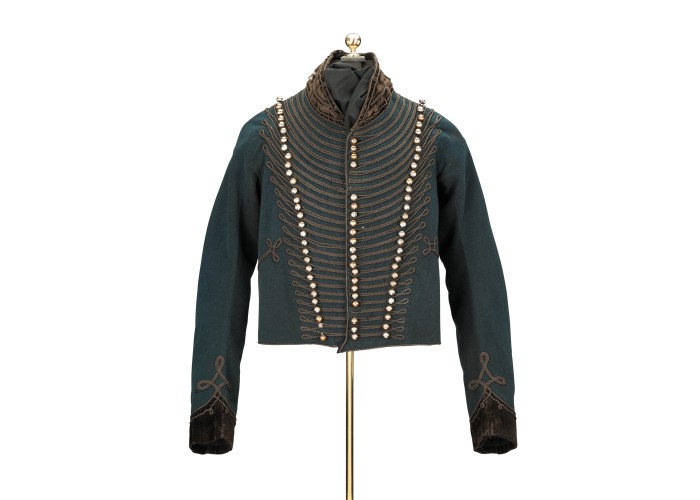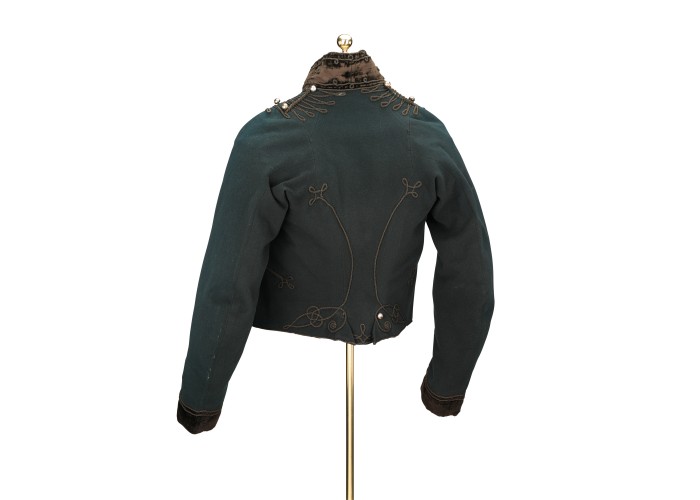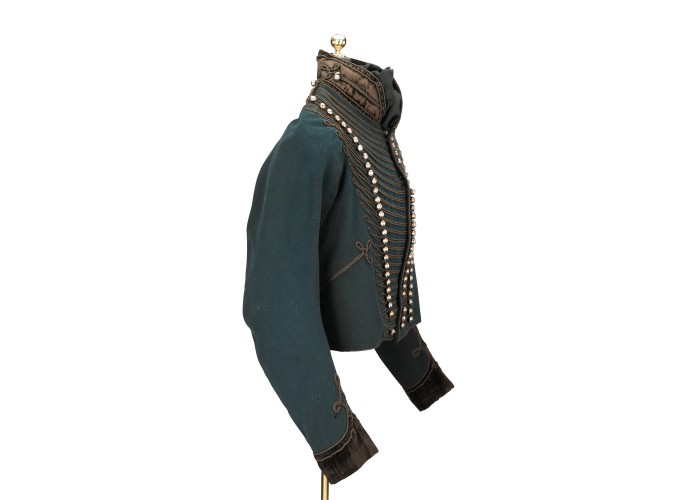Rifleman’s Jacket
This is the green jacket of a British soldier from the 95th Rifles, a regiment of veteran skirmishers who fought at the Battle of Waterloo. They were the only British regiment to wear a green uniform rather than the standard red coatee. This was for camouflage, as the Rifles were supposed to take cover from the enemy rather than stand in line, and to use their accurate weapons to pick off enemy soldiers.
Most soldiers on both sides at Waterloo carried muskets, a gun that was only effective in massed volley fire at quite short range (~75 metres). Rifles were accurate and could shoot further (up to 180 metres), but were more expensive to make and difficult to use. The British Army founded an Experimental Corps of Riflemen in 1800, to test whether it was useful to have small units of rifle-armed troops fighting alongside lines of musket-carrying infantry. They were equipped with British-designed Baker rifles.
The Rifle Corps, soon renamed the 95th Regiment of Rifles, proved themselves an extremely useful force. They would scout and skirmish ahead of the main army, fighting in teams of two to provide covering fire. They could snipe at enemy officers, standard-bearers or musicians, sheltering behind rocks and trees. For this reason, they wore dull green coats and black belts, so as to blend in with their surroundings better. Fighting in Portugal, Spain and France, they earned the respect of the Duke of Wellington.
Despite this, the 95th Rifles did not skirmish at Waterloo – there was too little cover, and too much danger from the French cavalry, who could easily cut down pairs of men without the protection of their fellow soldiers. They fought as standard infantry, assembled in lines to fire, and forming up into squares when the French cavalry approached. Here they used the “sword” bayonet on their Baker rifles, forming a hedge of spear-points that kept enemy horses at bay.
Half of the 95th Rifles defended the sandpit and knoll east of the road to Brussels, and the other half lined the hedge on the Ohain-Wavre road, 150 metres behind the main British lines. They fought fiercely, suffering 600 casualties from just under 1,300 men.
In the years after Waterloo the 95th Rifles were named “The Green Jackets”. Other regiments often nicknamed the Rifles “the Sweeps”, mocking their dark green coats as dirty0looking, or “the Grasshoppers” because of their agile manoeuvring.
-
Curatorial info
- Originating Museum: The Royal Green Jackets (Rifles) Museum.
- Accession Number: WINGJ-2006.613
-
Use this image
You can download and use the high resolution image for use in a non-profit environment such as a school or college, but please take note of the license type and rights holder information below
- Rights Holder: Copyright The Royal Green Jackets (Rifles) Museum. Photography Relic Imaging Ltd.
- License Type: Creative Commons
Find it here
This object is in the collection of Royal Green Jackets – Rifles Museum









